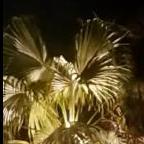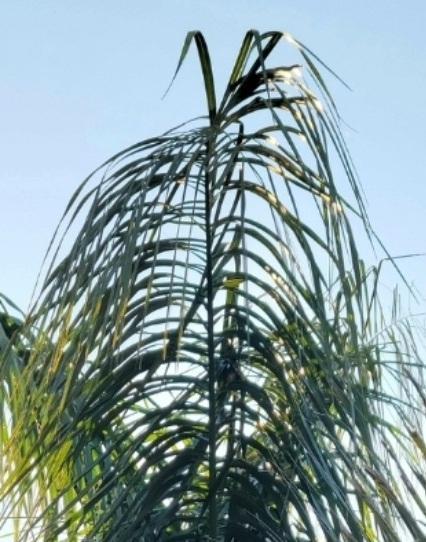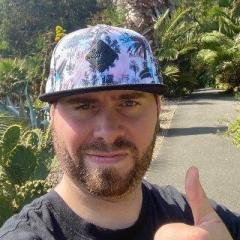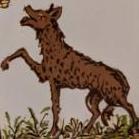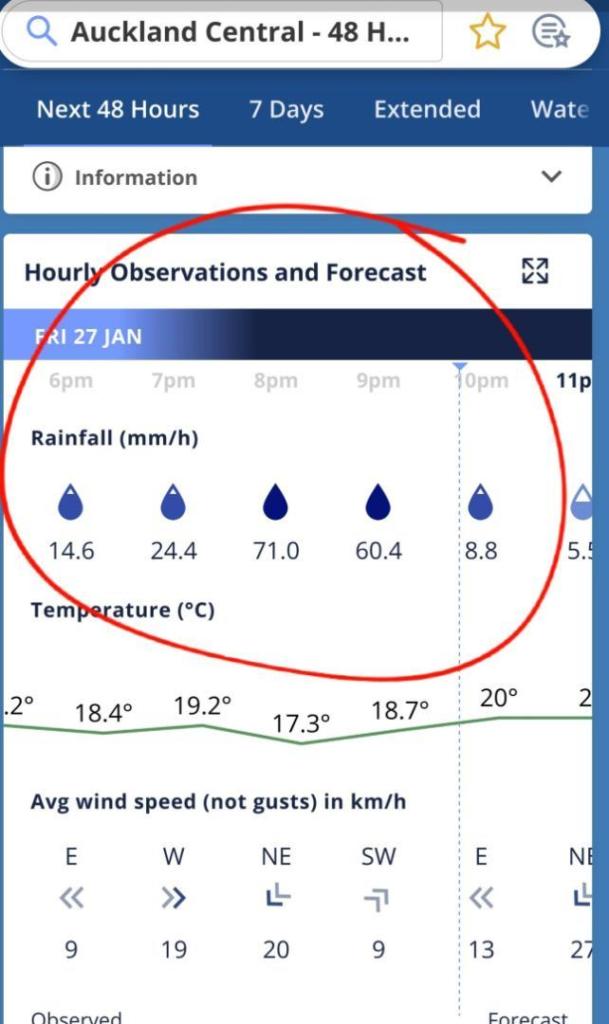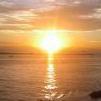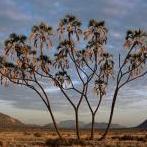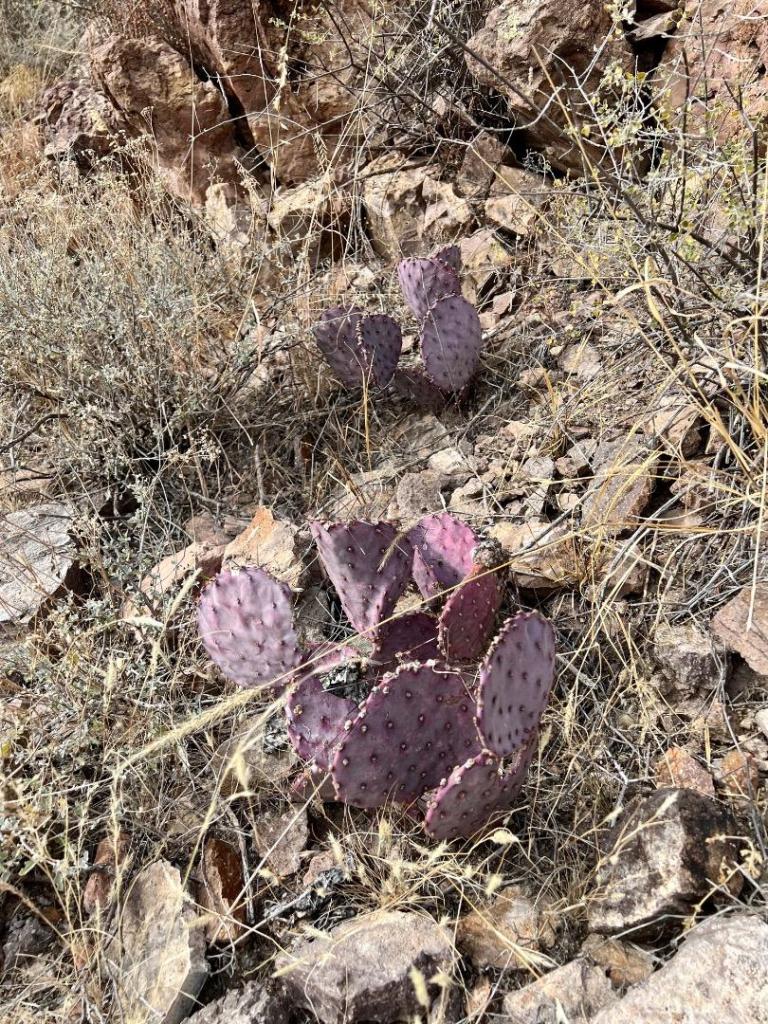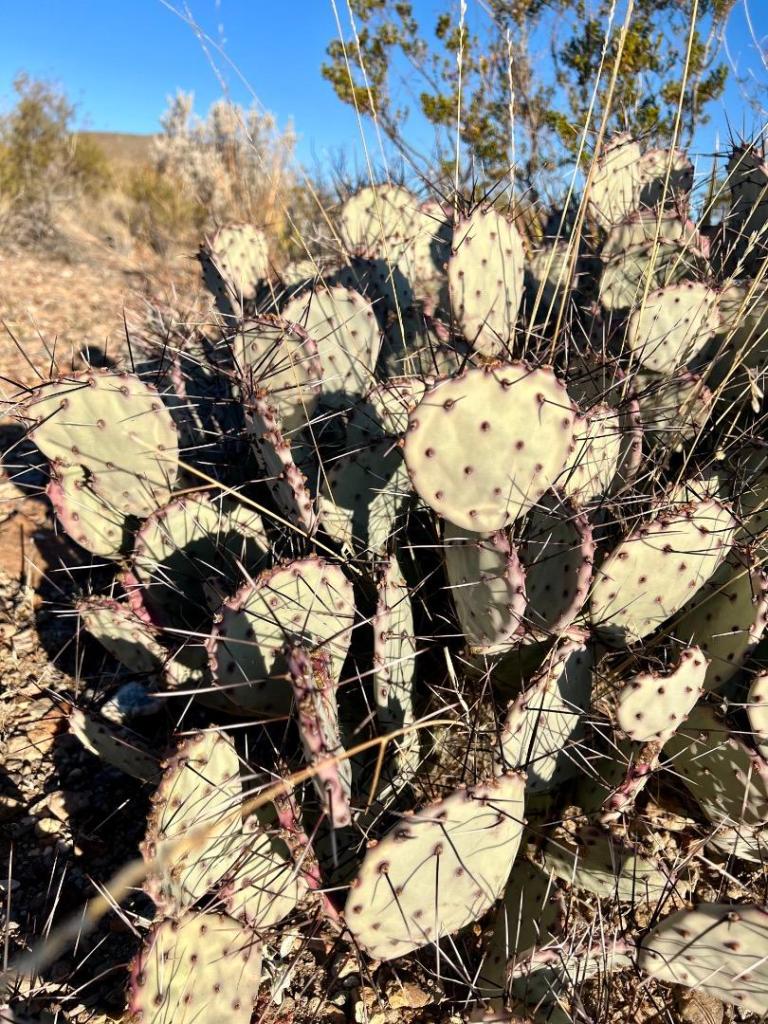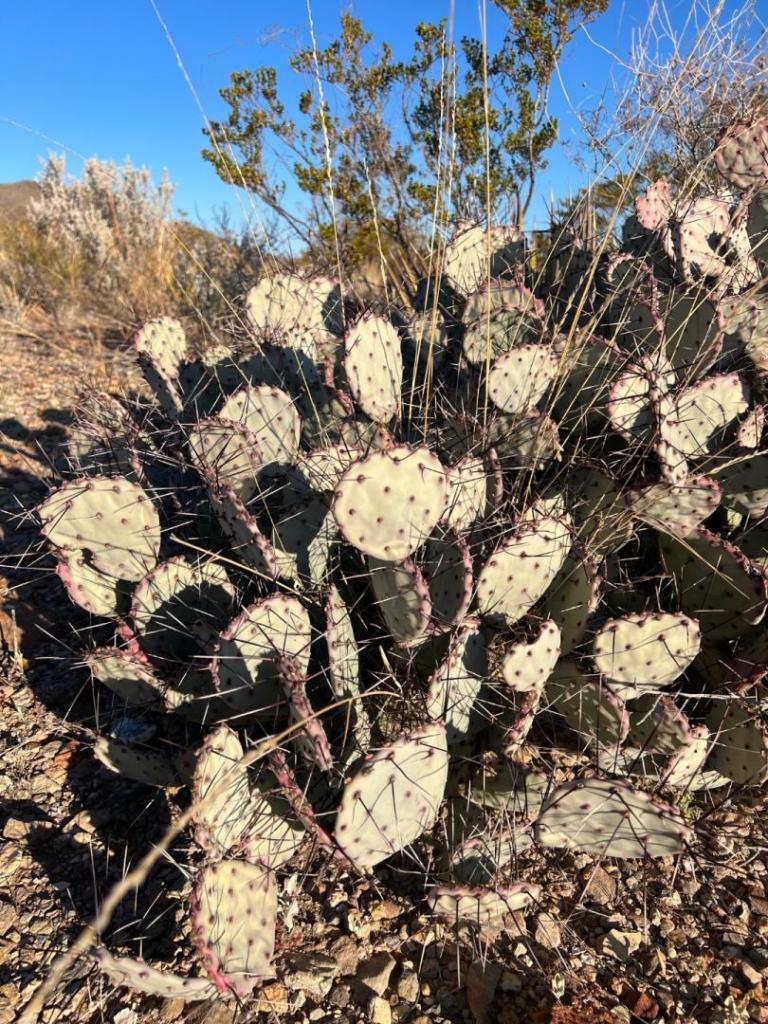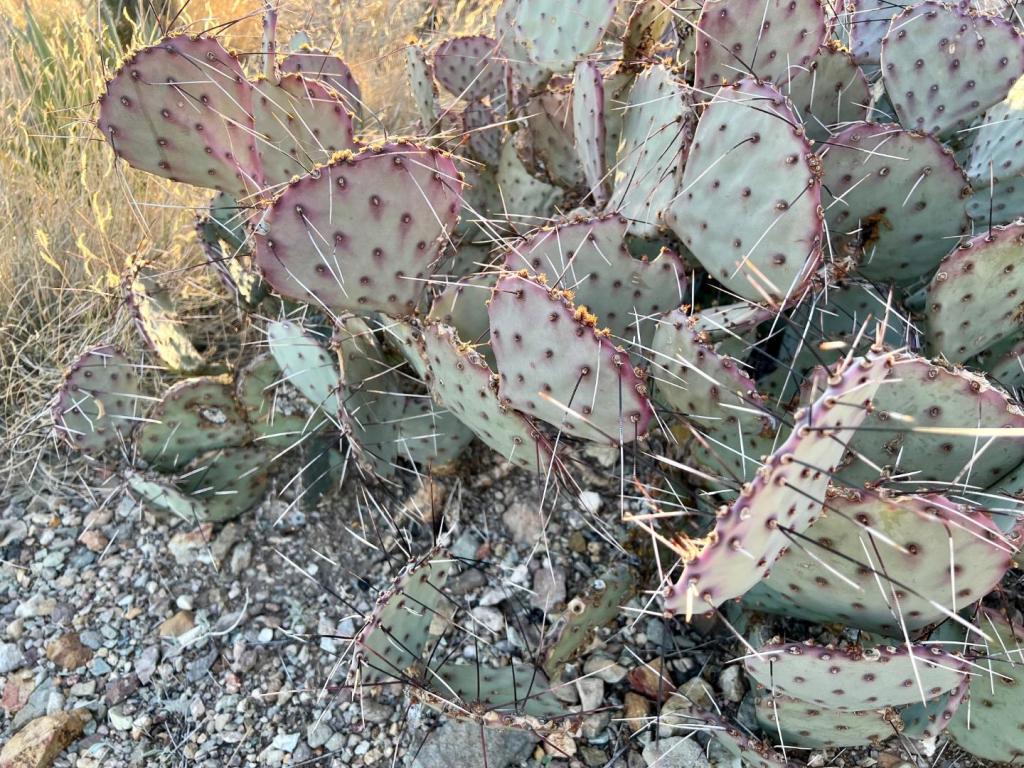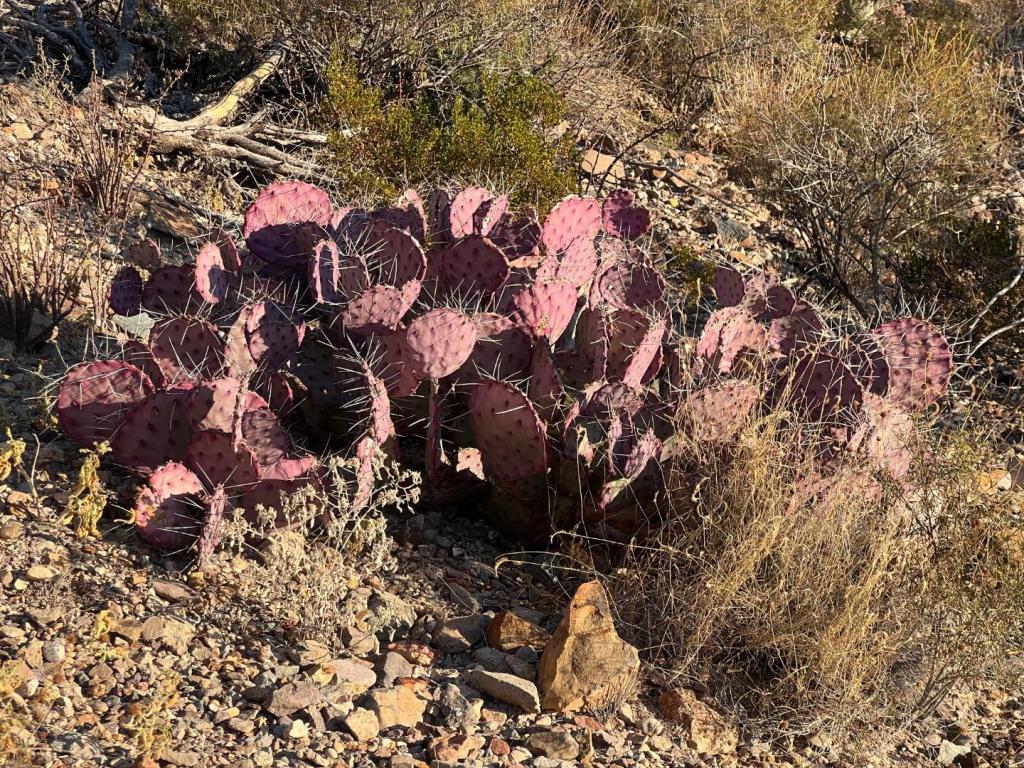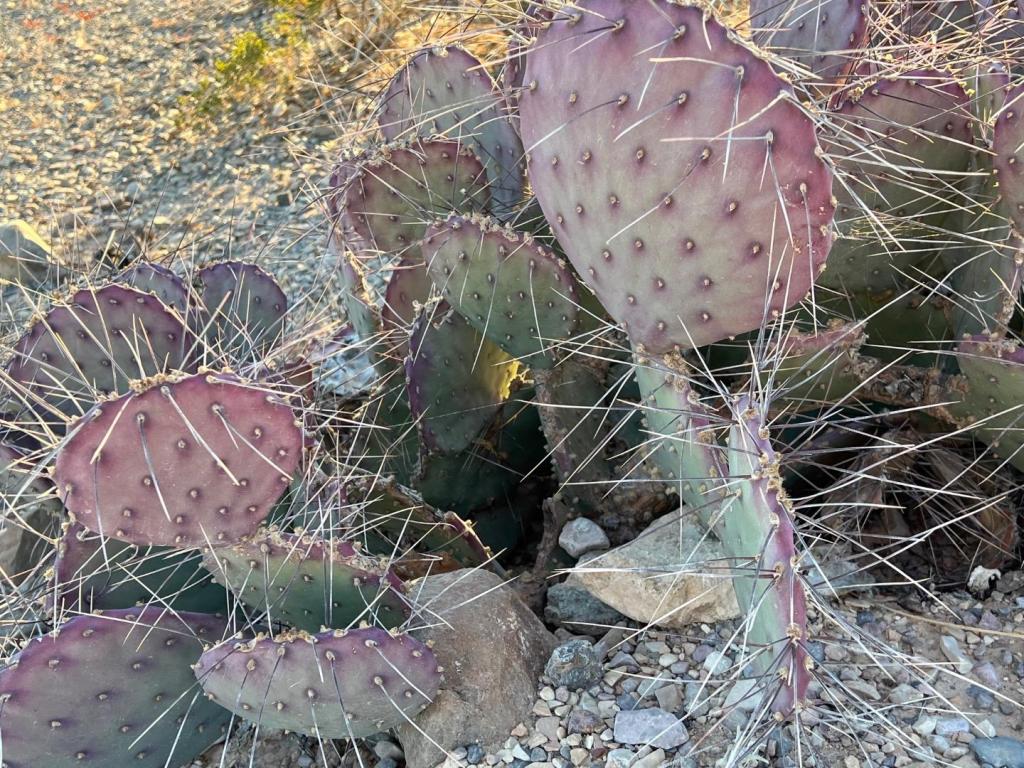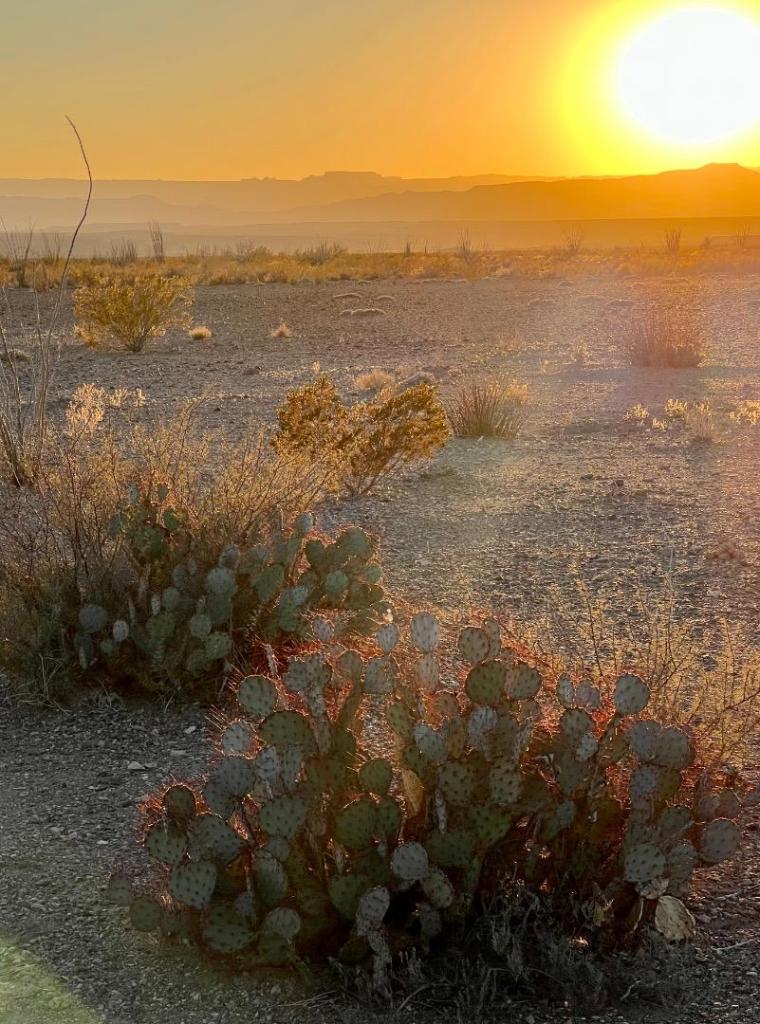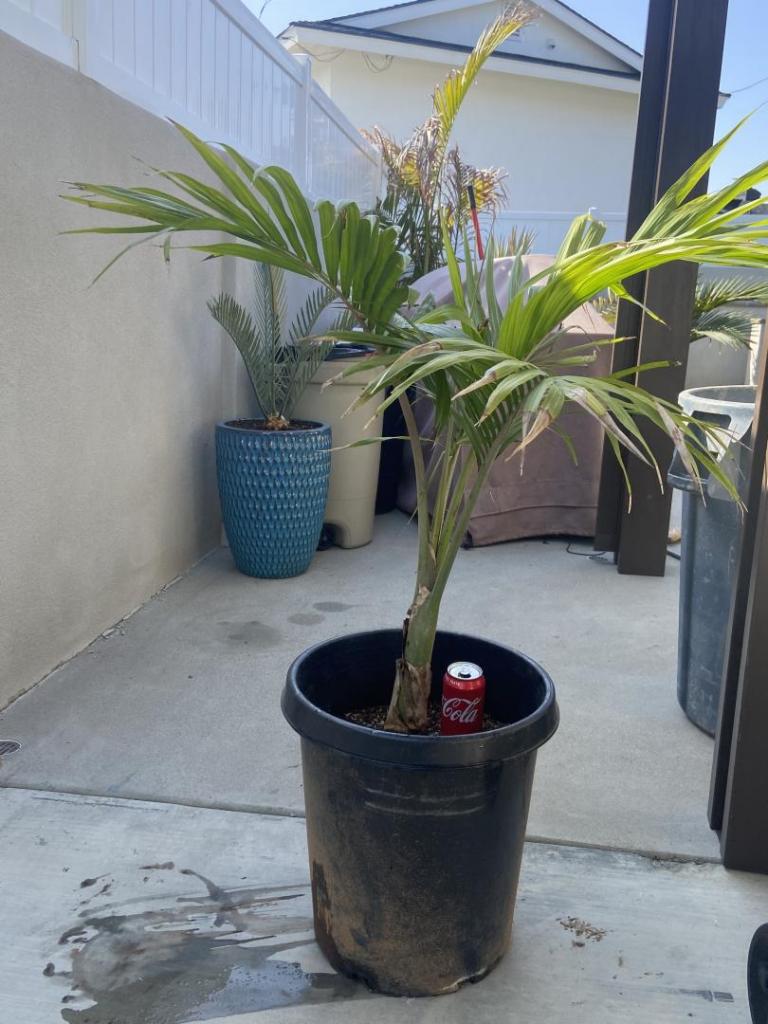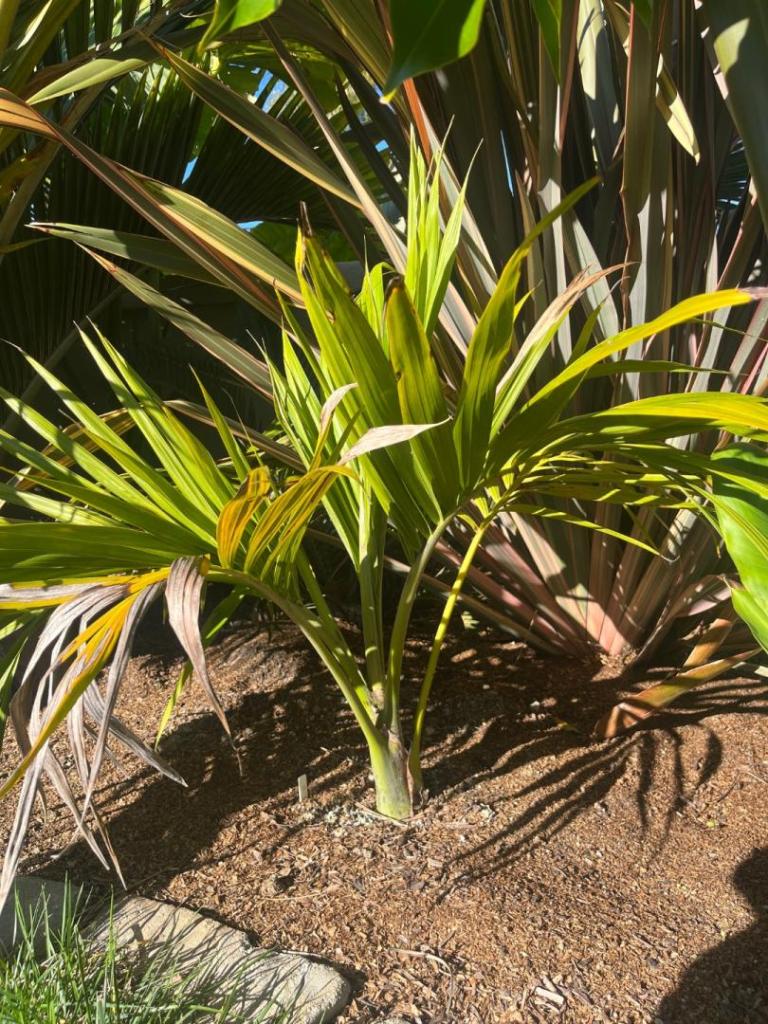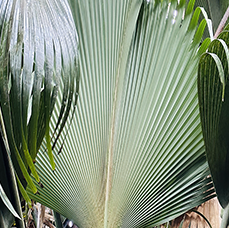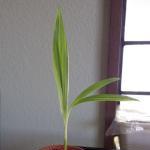Leaderboard
Popular Content
Showing content with the highest reputation on 01/28/2023 in all areas
-
Hello Everyone, Thank you for some of the positive messages, i am thankful for all of them. My name is Joao Santos Costa, i am from Portugal and i am the new responsible for the management and administration of Palmpedia and connected resources. Palmpedia as been over the years a fundamental and unavoidable tool, an endless source of information to the palm growing hobby. I am forever thankful to Dean, Ed Vaile, and all people who have contributed immensely to the creation of this incredible resource. My path with palms started more than ten years ago, when i wanted to create a big garden around my former residence in Lisbon, and wanted to have some privacy from all the neighbours, together with the perpetual feeling of evasion and "vacations feeling" every-time i would step home. Likewise many of you the inicial humble idea of planting a few palms turned out to be an incurable addiction, that month after month started to influence where we would spend the weekends, to where we would go for vacations. From a nice garden the things escalated quickly and i ended up with a full size jungle with dozens of mature specimens, I got hooked. I loved every bit of the new lifestyle, this garden could provide, so did my children and my wife. From late night barbecues, to tiki jacuzzi parties, to bird watching with my toddler, was a fantastic experience that forever change my mindset on the "art of living". Professionally, i have responsibilities in a group of companies with ranging activities from managing real estate portfolios, to construction and hospitality businesses. Few years ago, i started the acquisition of multiple agricultural investments and have turned my hobby into a full size business operation. Currently we have 3 state of the art productions facilities, manufactured entirely in double glaze polycarbonate, biomass heating, evaporative cooling, and full climate control, where we are fully devoted to the germination of palm trees. We are also establishing plantations in Sao Tome and Principe, and Mauritius for the more tropical varieties. As of today we hold several tens of thousands of 2-3 year old palm seedlings of around 237 varieties and growing. I am focused in creating top quality plants. Our aim is to introduce recently discovered or unusual palms in the ornamental market, after all i guess we are all tired of finding the same options for sale in the conventional garden center! I have quite ambitious plan for the new Palmpedia, and i hope to have you all along for the journey, but i also understand that i will not be able to be a very consensual and accommodate everyone requests, but i will try! In what concerns the future of Palmpedia, our plan is to keep the entire structure in the wiki platform like was originally intended and allow edition, inputs, and submission of pictures and content. We are currently working in the log in and users platform to allow people to sign in and edit the content of the pages, i believe in the next few days will be operational. Also i understand that there are several scientific revisions that need update, and we are currently compiling with the help of fellow forum members the list of updates needed to perform. So if you have a suggestion or topic requiring update we are thankful to receive them by email to info@palmpedia.com. Palmpedia will remain a free and open "go to place" for palm information, independently where you are in the globe. Regarding our plans on the comercial front. We are currently testing the new online marketplace, that will be made available on the website. This will be a multi vendor online shop, (much like amazon) and will allow verified nurseries, brands, individual growers, and hobbyists to sell their palms, and their seedlings. With a very simple and user friendly platform will allow every nursery to have equitable online exposition and a simplified online sales spot. If you know a nursery let them know that we are working in order they can soon list their palms and exotics stock in the world leading marketplace we are creating. I strongly believe in this model because because is the only way to provide a truly global service without the limitations of phytosanitary regulations. In other words, depending on the place you are and will access the online shop, the assortment you see available to purchase is within your geographic range to be delivered without need of phytosanitary certificate. I am always available at info@palmpedia.com I hope to have all of you along, Best Regards, Joao9 points
-
4 points
-
4 points
-
3 points
-
Ill start with the non-palms For warning I wass out of town so nothing was protected. This elephant ear kicked it as expected Gwbop is toast, good thing they're cheap. Meyer lemon is still out, no new growth Persian lime is doing great Ok now palms, The spear pulled on the queen, golfball for size. Pygmy dates are done for. The only hope was a little bit of green robusta #1 did ok, i just marked it. Robusta 2 is dead Livistona is ok too so are her nieces and nephews3 points
-
3 points
-
3 points
-
I hate to say it but while Taylor forms evidently are incredibly hardy with large specimens growing in Raleigh for decades , they didn't handle my 6F very well . I have 3 Taylor Forms and they all look like the palm on the left . The palm on the right is a stiffer fronded form that looks much better . Wow , what a difference ! Will My Nainital did OK . Trachycarpus princeps ( green form ) had some issues . I don't know if it can handle 6F with damage or the microclimate is really good , but it has green spears and should do well in the spring . The more exposed fronds took a lot of damage whereas the lower fronds near the house are perfect . What a difference a microclimate makes .2 points
-
Thought I'd share a few pics of my indoor 7a winterizing palms. I raise mainly Trachycarpus and the colder hardy Sabal minors and have probably 50 pots in my greenhouse and that many inside. Here is a few if my lesser cold hardy palms. Just a few phoenix from seed, my butia pindo, a couple Trachycarpus, Bald Head Island Palmetto, a container of Sabal Louisiana, Bismarckia Nobilis, and W. Robusta, s. Blackburniana. I had the Blackburniana in my greenhouse but when we had the big Christmas freeze, I brought them inside. I paid a little bit for those. Sorry looks like some came in upside down.2 points
-
2 points
-
2 points
-
If you are curious, try to see if it grows back. But I agree with @mnorell that this palm had pre-existing problems. It looks stunted and neglected. How long have you kept it in that pot? How often do you water/feed it (majesties are water/fertilizer hogs)? And they make lousy potted plants in the long run. They are also plentiful and cheap. That said, you may want to invest in a newer, healthier palm. Majesties are at their best looking before they trunk.2 points
-
Looks like you already had a serious problem with this palm (the dark grey dry-wood and rust-colored areas). The snap-off area is only the zone that is white in color, about half of the surface area. I would pour some peroxide over that ruddy area and also make sure there isn't something actively affecting the health of the plant. Otherwise your apical meristem does look to be intact and it should regrow (though you will always see damage there). But is there a way you can put that palm into the ground? It looks desperately in need. Ravenea are river-dwellers and want lots of water and fertilizer...also remember that the root-initiation-zone of palms (at the base of the trunk) in California needs to be continuously covered by soil. Since it is the area where palms grow new roots, the dry atmosphere will stop them from forming, most likely leaving you with a very unstable and unhealthy palm over time.2 points
-
A parting site at the Kona Airport. I noticed the unusual curvature of the leaves first then as I got closer I could see it has a leaning crown. Reminded me of the common Howea forsteriana leaning crown syndrome. In that I have not seen this occur with Pritchardia before, I thought it worth asking if this is often seen here and what the cause is? Adjacent one looks fine, showing the underside with fruit of the healthy specimen. A side note, I didn't take photos of the entryway of a resort north of Kona that we drove in to visit the beach. It was pretty sad to see the drive lined with Washingtonia robusta and coconuts at the terminus ends of the long road entrance. Why an invasive when they could have used so many different Pritchardia instead. On the coconuts, I will parrot what Jeff Marcus commented when showing his Beccariophoenix alfredii, madagascarensis, and fenestralis, they give the look while eliminating the need to continually neuter the plants to avoid dropping coconut on human syndrome. Ahhh but that requires thinking out of the 📦.2 points
-
Rocks are mulch. There is organic mulching like wood chips and there is mineral mulching like gravel and such. From my experience young palms don't like rocky mulch as much as bigger ones do. I guess that's because before they've established some strong trunk it restricts their ability to do so at least a bit. Also it really looks like palms that come from rocky habitats can handle rocks even at a young age better than other palms. I have a Lava based bed where I grow mostly Californian/Mexican plants. Lava is a regional natural resource here and readily available because of it. It's radiating heat at night because of it's dark colour and it's quite porous which still provides good air exchange. Sabal uresana seems to be a palm that likes this kind of mulching already at a young age:2 points
-
2 points
-
2 points
-
2 points
-
I really appreciate these reply posts suggestions and input. It will take me some time to digest all you shared. I hope I can source a few of the important tall and shade varieties as larger crated or barefoot but I haven't investigated what nurseries exist in the Peloponnesian area. It would be interesting if I could bring several bare root Rhapidophyllum histrix pups from here, likely they would do well there. Someone mentioned baby palms.eu as a source for mail order palms/seedlings who are in Spain. I enquired of them and they seems to feel shipping to me would not be a problem, and as an estimate a 30 kilo box holding several plants would cost about 150 Euros. Hopefully I can find things closer to Katakolo and for now I'm just in the planning stage and one house and it's concrete fence walls removed before I can plant any specimens. Also, I really should have installed new fence walls on three sides leaving one end open for construction of a home that approval to build may take a year or more to have approved. Anyway, it nice that palm and tropicals folks are nice there in Europe just as they are here. I really appreciate you folks posting with palm talk!2 points
-
You would be quite spot on, were there not those darned imported pests. Truth is that the planned garden will be located in south western coastal mainland, which is blessed with a very subtropical climate, moister climate, less heat in summer, less cold in winter, relatively high max temps almost every day during winter and considerably less northern wind. An entirely different world from the eastern coast in same latitude. All this because the highest montane massive does not run across the country from east to the west but rather from north to south. Therefore I am bound to recommend only crownshafted palms, which are less susceptible to an atrack by rpw and Paysandisia, plus some non crownshafted spp which have proven hardy to those pests, such as Arenga and Caryota, and plenty of (sub)tropical fruiting trees. Unless one desires to inhale almost year around pesticides, because biological treatment for extensive palm collections is outrageously expensive, difficult and during summer not entirely effective.2 points
-
Here in the west of Australia it’s often the opposite of the east coast. It’s not quite as simple as that, but a La Niña event in the east brings dry to the west. An El Niño in the east will likely bring wet to the west, especially if we have a favourable Indian Ocean dipole and the Southern Annular Mode lines up right. So right now in the west it’s as dry as a chip, but I’m not complaining as my irrigation works well. We did have extreme cold last winter that most likely was a record for maybe 50 years. So far summer has been mild with no heatwaves like last year. I think summer record heat can transform into winter record cold. I’m hoping we have a mild average non eventful winter this time round. In regards to the Auckland flooding, I hope it calms down over there soon and people can start the recovery process.2 points
-
2 points
-
Phoenix looks more like dactylifera or a tall sylvestris. The seedlings are obviously palmate so more likely Sabal.2 points
-
2 points
-
2 points
-
Speaking from my former sugar cane lot on the rainy windward side of the Big Island, my clayey volcanic soil is pretty acid and, yes, I have had many instances of boron deficiency over the 10-14 years I have been growing palms here. Other local palmers in residential districts have also. I use nutricote and a pinch of boron crystals in those cases. Most recover after a while, even some that don't get treated. In my case (former sugar cane land), I hypothesize that the sugar cane used up many of the desired nutrients during the plantation era.2 points
-
You have quite a good microclimate being on a peninsula. I agree that you should plant the palms and trees you intend to use as canopy first. Since you have sandy soil it might be worth adding in loads of mulch and over the years you can add more and more to improve the soil. I would add royal palms as a large trunking stand out palm, queen palms also grow pretty fast and have a good sized canopy. You could add in phoenix canariensis and Washingtonia robusta and filifera but they are probably already very common in the area. I would go for phoenix dactylifera (the true date palm), phoenix theophrasti, phoenix rupicola, phoenix Sylvesteris, phoenix reclinata, phoenix roebelenii and phoenix loureiroi. Bismarckia would also made a nice stand out palm.Chrysalidocarpus decaryi, ambositrae, baronii, onilahensis should be fine there. Some of the arenga palms will probably do well there. For understory palms I'd use the chamedorea genus.Cryosophila warscewiczii, chambeyronia macrocarpa, chambeyronia oliviformis, Chambeyronia lepidota and Wallichia as some nice rarer palms. I'd also go with the whole archontophoenix genus, some big archontophoenix Alexandrae in full sun and under a light canopy archontophoenix cunninghamiana, myolensis, purperea, Maxima and tuckeri. When the canopy has really grown in you might be able to grow Rhopalostylis sapida and Rhopalostylis baueri in lots of shade. Livistona should do pretty well there too and sabals.Acoelorraphe wrigthii and Allagoptera I think will be fine. Howea belmoreana and howea forsteriana need to be in the shade I'd also put those under denser pat's of the canopy. If you want a coconut look a like since Cocos nucifera won't grow there try Beccariophoenix alfredii or Jubaeopsis caffra. Since you have sandy soil I'd try and take advantage of that and have a large arid section with dessert plants such as aloes, cacti agaves, yuccas and arid shrubs. I would then have a Mediterranean area full of Mediterranean plants lots of flowers ect and maybe a few palms too. Finally for the largest section I'd have a full sun tropical biome area full of palms and exotics and then a shaded section at the back with the same things but can't handle full sun such as bromeliads, monstera deliciosa, colocasias, caladiums, chamedorea ect. Trees such as eucalyptus, jacaranda mimosifolia, Delonix regia and Araucaria heterophylla would do well there. The arid and Mediterranean sections would reduce watering so you can make sure the ones in the tropical style section get plenty of water. Bougainvillea is also something I'd recommend growing there. Of course there's plenty more things you could do but those are just a few ideas. @Phoenikakiasprobably knows more about what palms and plants would do well in you're climate.2 points
-
2 points
-
I was digging through my phone and found this pics that I took around thanksgiving last year. They have probably been in the ground for 15-20yrs. They took a pretty good hit in the 09-10 winter and lost some big washies next to them. These photos don't really do justice to just how massive those trucks are. They must be almost 3 feet in diameter.1 point
-
I don't plan on doing anything special . Those Trachys have been through 4F and 5F years ago and that cold was more prolonged than that December cold last month . I'm sure they will be fine but have to outgrow that ugliness . Will1 point
-
Prognosis not great. Hopefully its fixable. Grab some seeds lol! I had a queen palm do this, but it wound up being the dirt bag neighbors drilled a hole in the base and poured an herbicide or something in it. I only found the offense when I was cutting the tree down years later after they had moved. The new growth from the tree was arcing in the direction of the injury. It all stemmed from them wanting me to cut down the tree because it was blockimg their DirecTV dish that was installed hanging off the roof. I told them to move the dish. Amazing what a little coax cable and lag bolts will do...1 point
-
The specific location i saw this at was a long entrance with no walkways through a lava field off the highway. The actual resort began after the line of Washingtonia. So Pritchardia would have been an option even if shorter for a period as without a walkway no one would be walking into them or Beccariophoenix at the entryway monument. Regarding nursery men having sufficient patience, the suggestion on swapping Beccariophoenix for coconuts was something I was parroting from a local big island nursery man. It felt more like driving into a shopping mall in California with the exception of the coconuts at the entryway monument and at the other end of the driveway when at the resort. Who travels to Mexico City only to dine at a Taco Bell when they arrive? I guess too many people. I hear what you are saying regarding quantity over quality, which in this case is being measured in trunk height. We don't have to like it. Good suggestions on the deficiency or banana moths as potential problems with the Pritchardia in the photo i posted.1 point
-
Been there, earned the right to cry? So sad to see.1 point
-
I bet Australia and NZ will get the exact reverse of all this next summer under the influence of a strong El-Nino. So record heat, droughts and fires again like in 2019/20. You guys seem to go from one extreme to the other as much as anyone. Either baking hot and bone dry with fires, or it's a mild, wet, proper wash-out with floods. ENSO is likely going to trend neutral by March and then probably El-Nino conditions by July-August. It would likely reach peak strength around this time next year during your summer and you would expect El-Nino to maintain for about 6-12 months at least before possibly going neutral again. It might not be neutral again until next March-April. So expect the polar opposite next summer. ENSO trending from neutral into El-Nino also usually brings baking hot summers to western Europe and eastern USA as well as erratic rainfall. The previous UK record max of 38.7C was set in July 2019 under those conditions, before last summer's 40C. Certainly worth keeping an eye on the ENSO in coming months.1 point
-
I had no idea the driest parts of Hawaii were so dry. It's a more complex cluster of micro-climates than I understood. Live and learn.1 point
-
1 point
-
Hello from Victoria BC. First post here. Realizing this is an old thread but going to ask anyway. In Victoria BC, where we have wet and cold winters, wouldn’t the rocks just absorb the cold temps and and chill the ground below further? I see the rocks being helpful in the summer where they would absurd heat and transfer it to the soil but my measly brain tells me it the rocks wouldn’t help here in the winter. Thoughts? Thank you.1 point
-
1 point
-
There are not really any signals that im seeing that suggests any freezing temperatures for the state for the rest of the month and going into the first week of February. Going through February, the pattern supports warmer than average temperatures for February with a ridge stationed over the Southeast blocking any major cold intrusions. I can see the light at the end of the tunnel, even if the end of February ends up being cold (there is no guarantee for warmer or colder)1 point
-
This happened to my Pritchardia pacifica in the Florida Keys last year, I first suspected that my gardener had one of his guys use herbicide...against my express wishes (I am very much a no-pesticide, no-herbicide guy). My arborist looked at it and wasn't sure but thought I might be correct. I asked the gardener about it and he swore up and down and sideways that this was not the case. Then someone saw it and mentioned that it was most likely a boron deficiency, that this was not uncommon on the limestone of the Keys (due to lockup of nutrient availability in high-pH substrates). I think at that point I looked it up in Broschat (or perhaps online) and saw a photo and description to that effect. I put a bunch of micros (including boron) on it and it did seem to be getting better. Unfortunately it was right when we sold the house so I have no idea what has happened subsequently. At the same time I had a beautiful old Leucothrinax morrissii show the same symptoms, but it was not as resilient, and carked it. I know back in the day Pauleen used to say that she solved her leaning Howeas just by flooding the root-zones with water, and who knows, I think it was never pinned down officially as to the cause (but it has been many years since all that and I didn't keep track of that "conversation," so perhaps the causative agent has been found with Howea). Is that still a problem along the California coast? And there are some other things going on on the Big Island, such as that dreadful banana moth, I'm not sure if it may cause symptoms such as this?1 point
-
1 point
-
Here’s an updated picture of my Hedyscepe aquired in March ‘21. It was finally grounded sometime last spring and has appreciated it. Looks like the base has definitely fattened up and taking on that coveted Hedyscepe look all of us love albeit small still. I planted another one in my front yard. This one was a small 1G and is it a bit more sun. Doesn’t seem to mind actually. Both these are growing right thru our “winter” here in SoCal and just pushed new fronds. -dale1 point
-
Can't believe no one has taken you up on this... If I lived near Miami I'd be at your door with a tropical plant thank you gift 🎁1 point
-
My GUESS is Pigafetta (David Fairchild was unable to grow it in Miami, despite being his favorite palm). Several other, super tropicals mentioned above from New Guinea, are certainly contenders. How about Loxococcox rupicola?1 point
-
1 point
-
Ladder-Backed Woodpecker, Dryobates scalaris playing hide and seek in a neighbor's Leucanea leucocephala.. While they look very similar, Nuttall's Woodpecker replaces Ladder Back in coastal California, majority of the Sierra Nevada, and north of Calif. Where the two sp. overlap in the mountains of S. Cal., a hard to distinguish hybrid can be seen. Like Gila Woodpeckers and Gilded Flickers, Ladder Backs can be found scaling columnar cacti and utilize Saguaros for nests.1 point
-
I just planted a small Phoenix Canariensis in a spot with a very good microclimate in my area. Will not protect it and see if the urban heat island plus microclimate stuff works.1 point
-
Teddytn makes a great point. My canopy-shaded Arengas and Chamaedoreas, in understory beds, are mulched, closer to the leaf litter you'd find them growing in naturally. I also prefer mulch for my bananas so their suckers have an easier time punching up from the ground. Rocks may not be natural in your native setting, but growing hand-picked palms in tactical locations probably doesn't look natural either. Landscaping is an art, which means you must take some artistic liberties. Even if you're growing boxwood and hollyhock, none of those plants showed up there on their own without human intervention. So you've got to make some choices. I guess there are 3 questions to ask yourself - 1. How does it affect my plant? 2. Is it practical? 3. Does it achieve my goal/vision?1 point
-
Rocks. Mulch blows away and washes away. Top dressing under rocks, if necessary.1 point
-
1 point




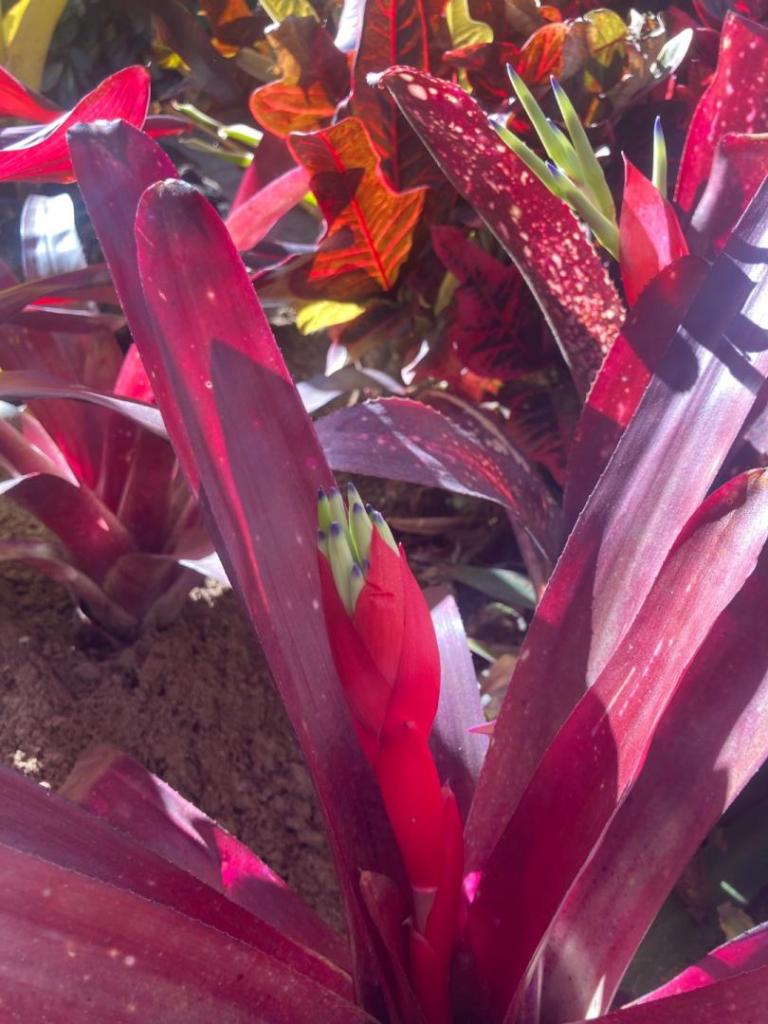

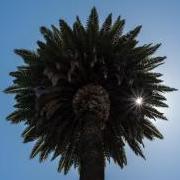

.thumb.png.c42f6651617b851f982957b6c712c363.png)
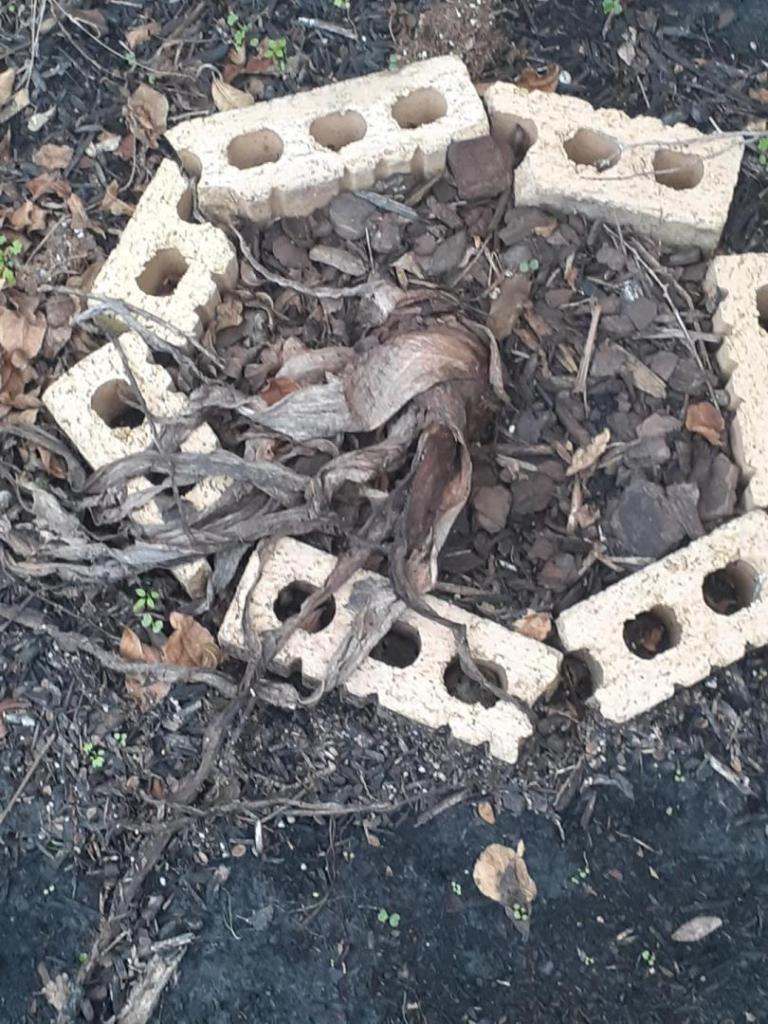
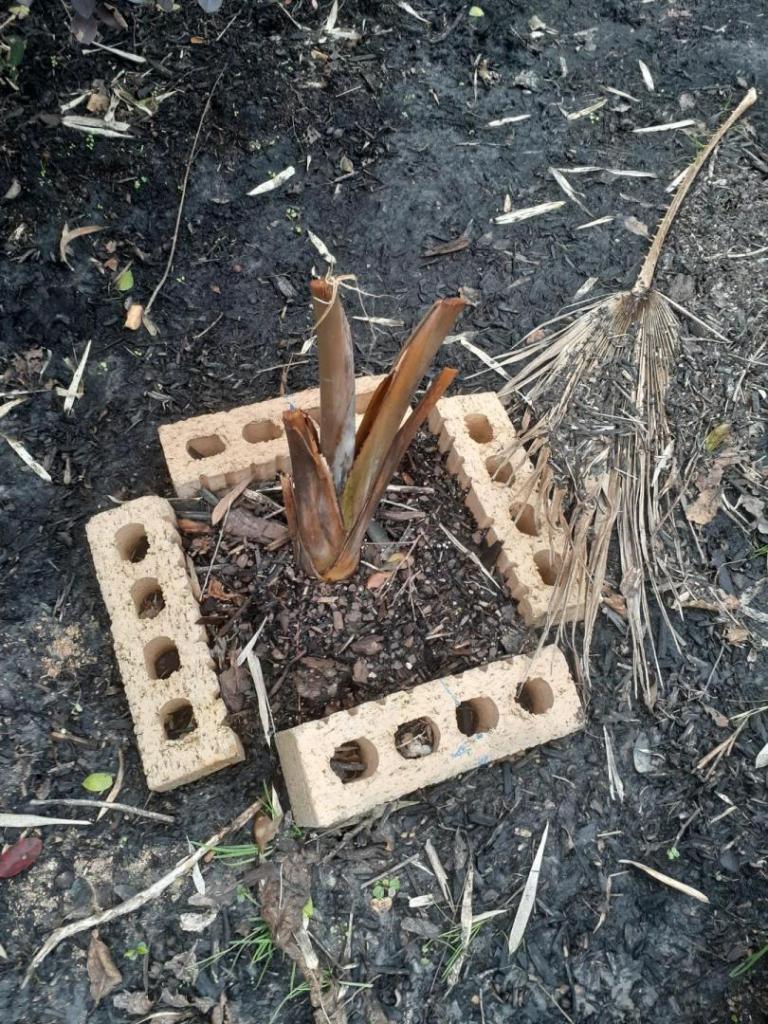
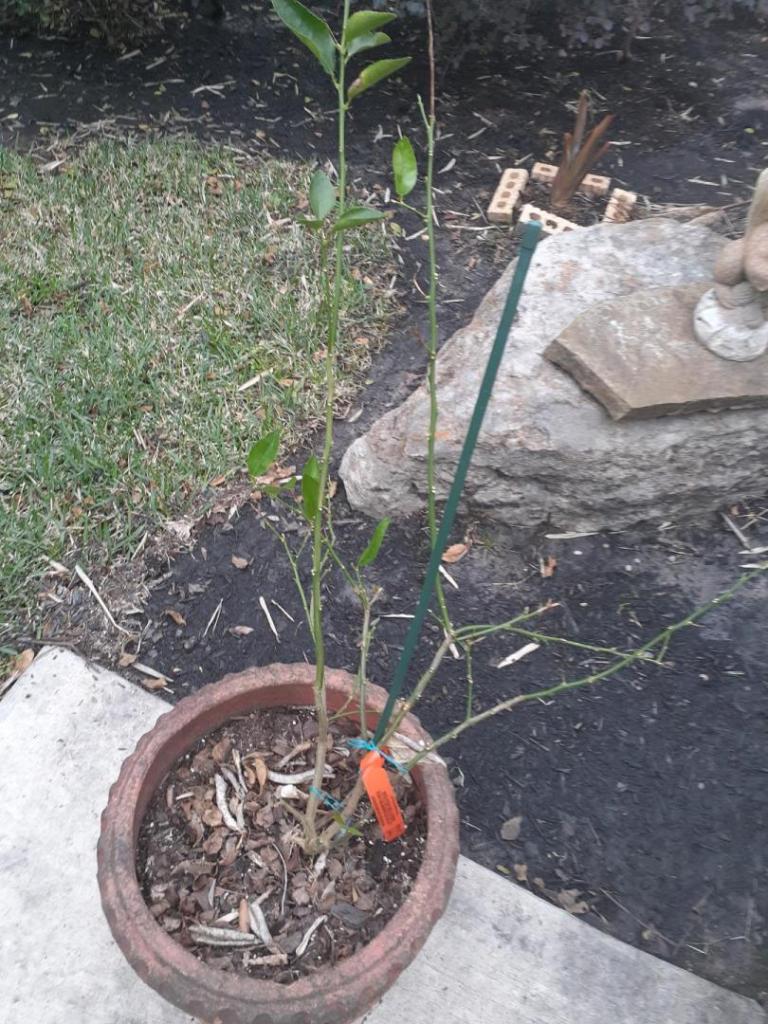
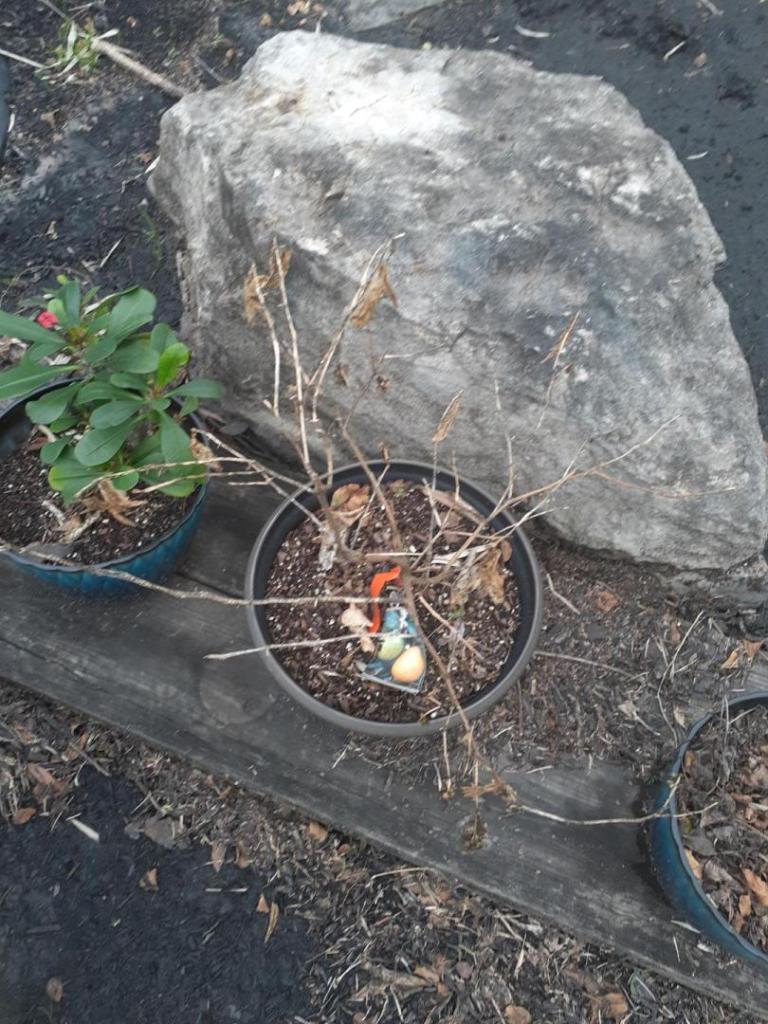
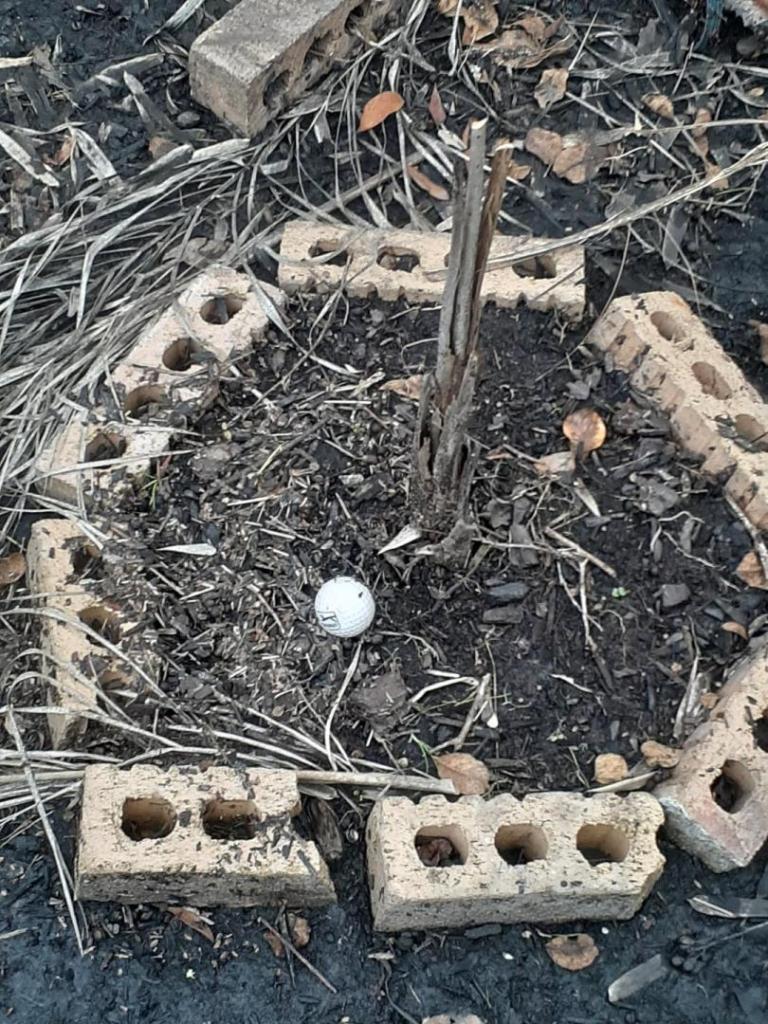
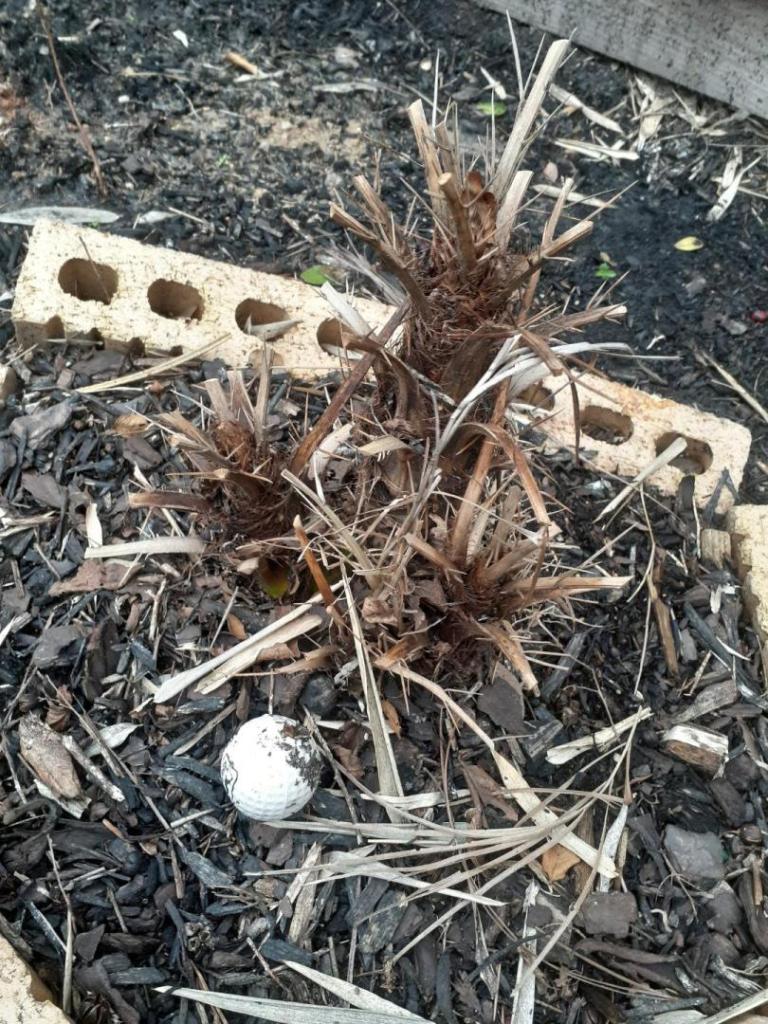

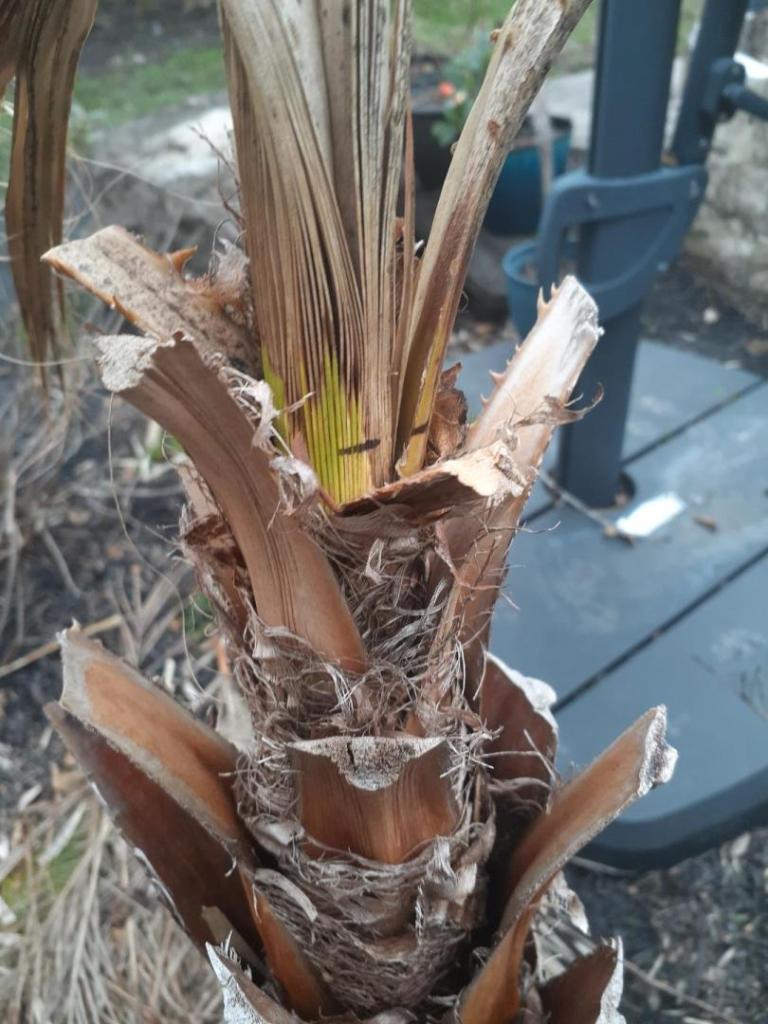

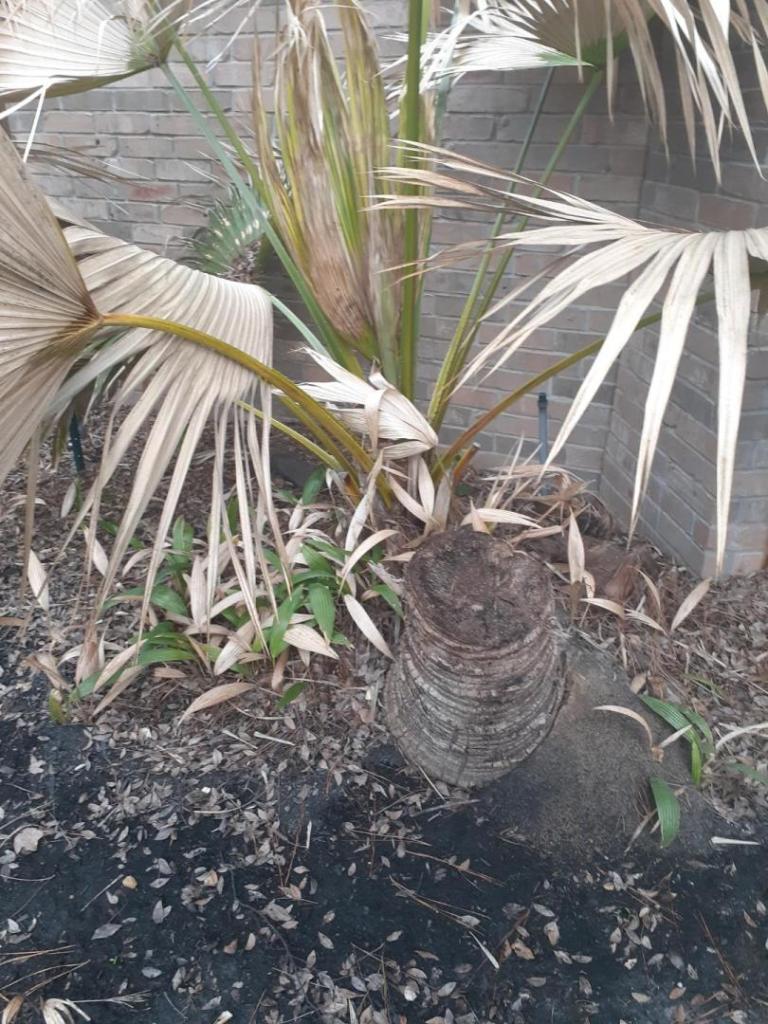

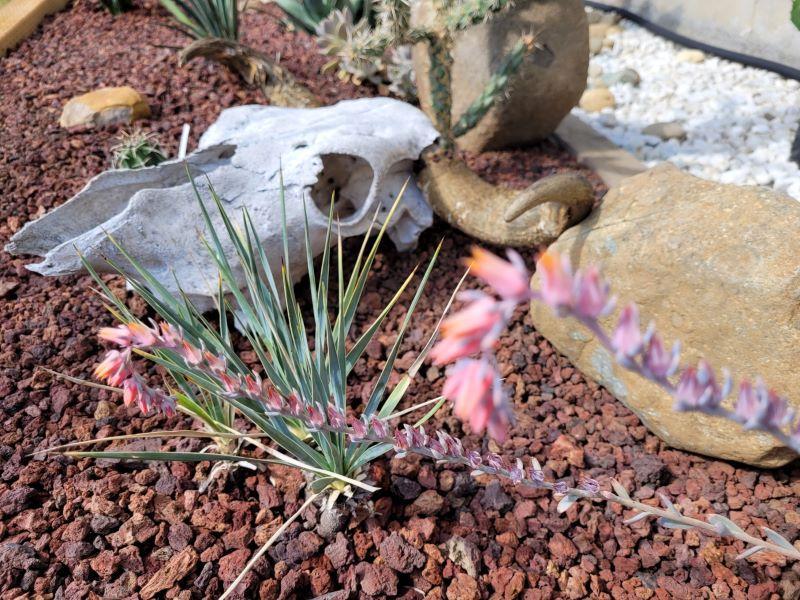
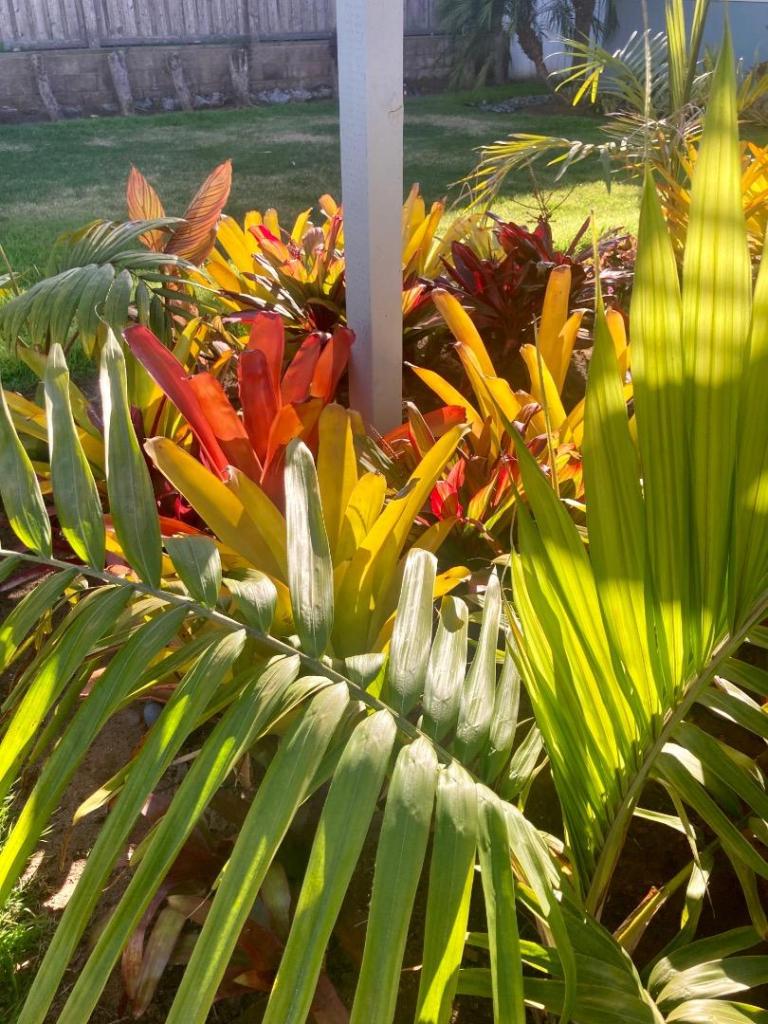
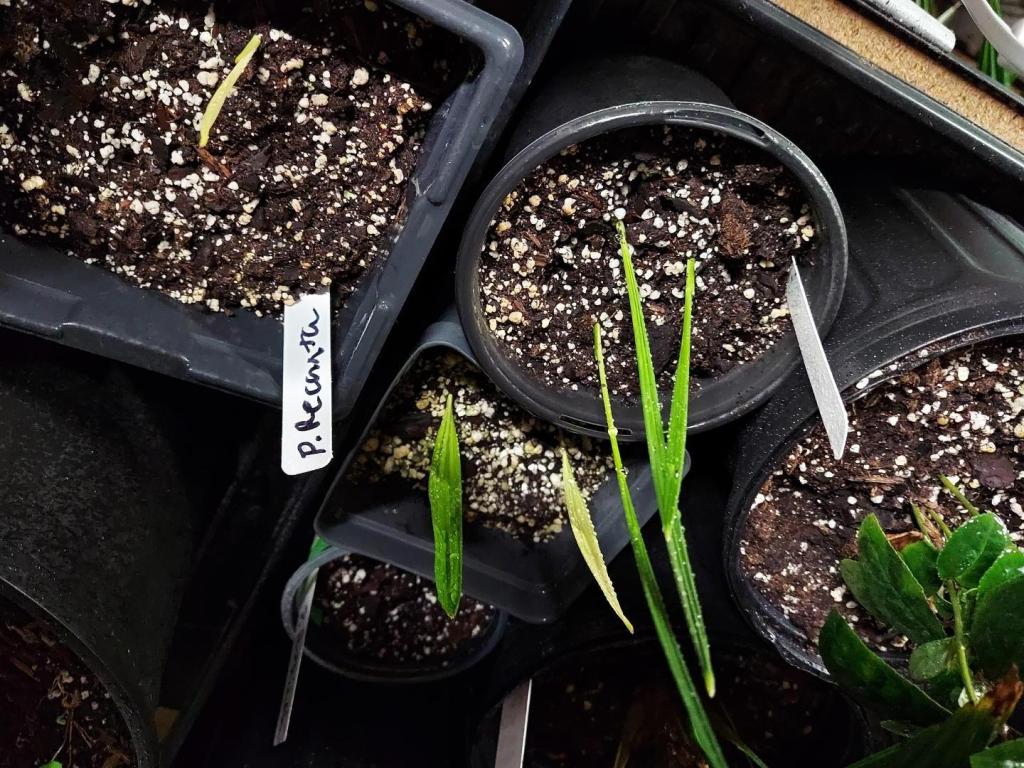
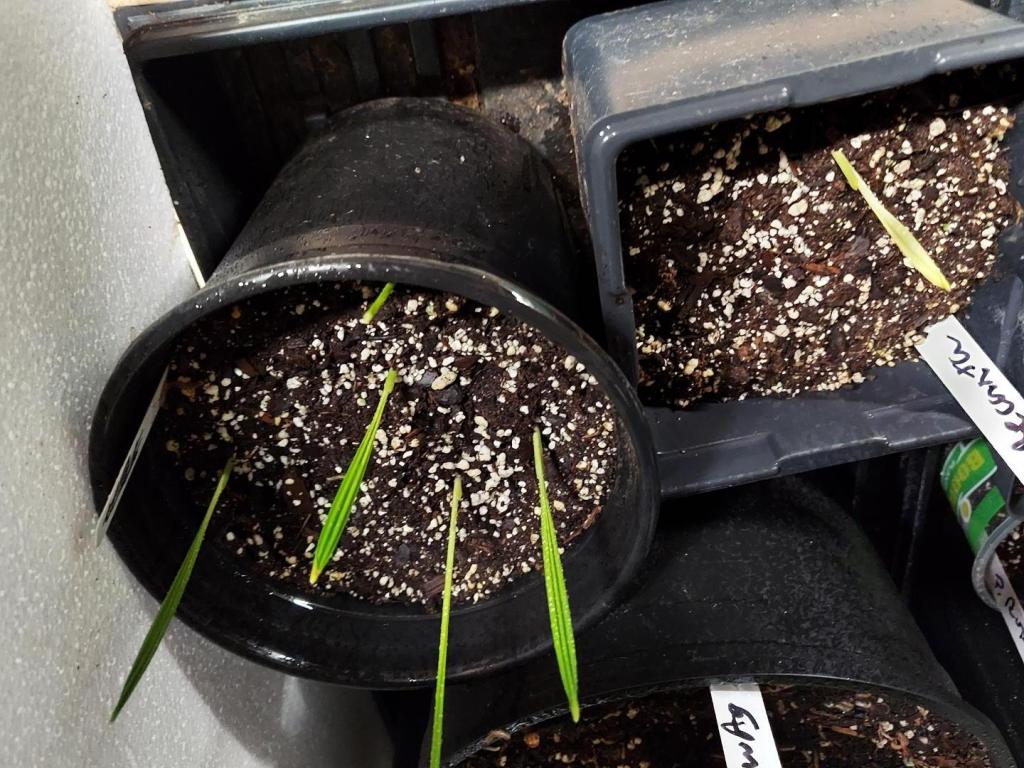
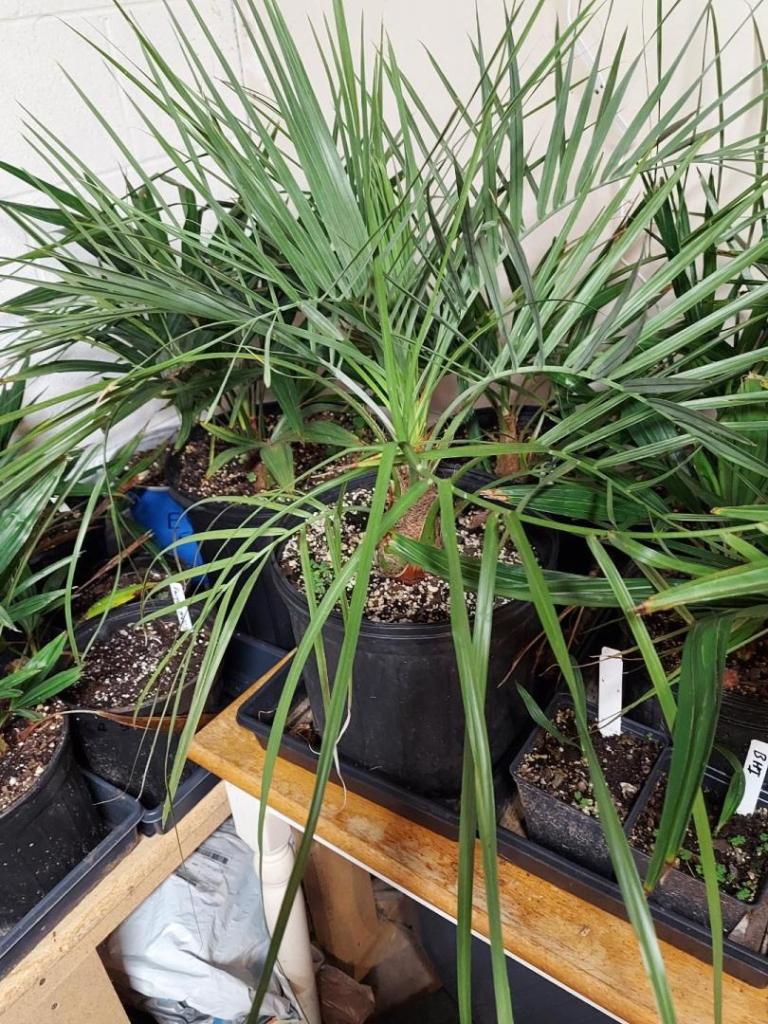

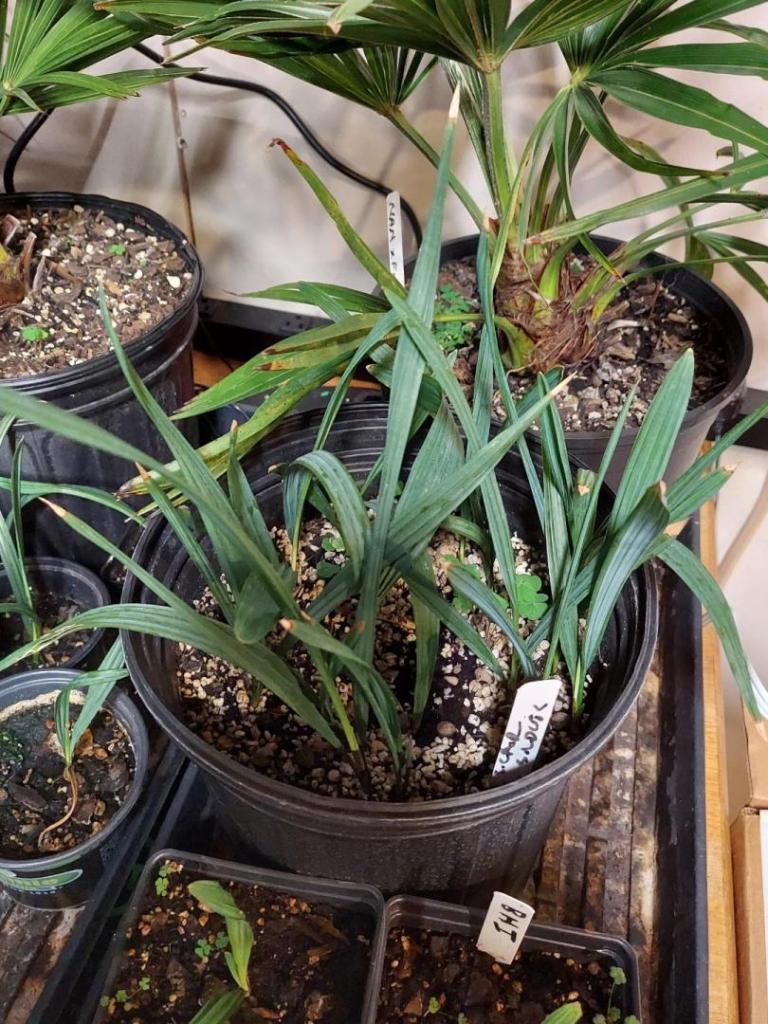


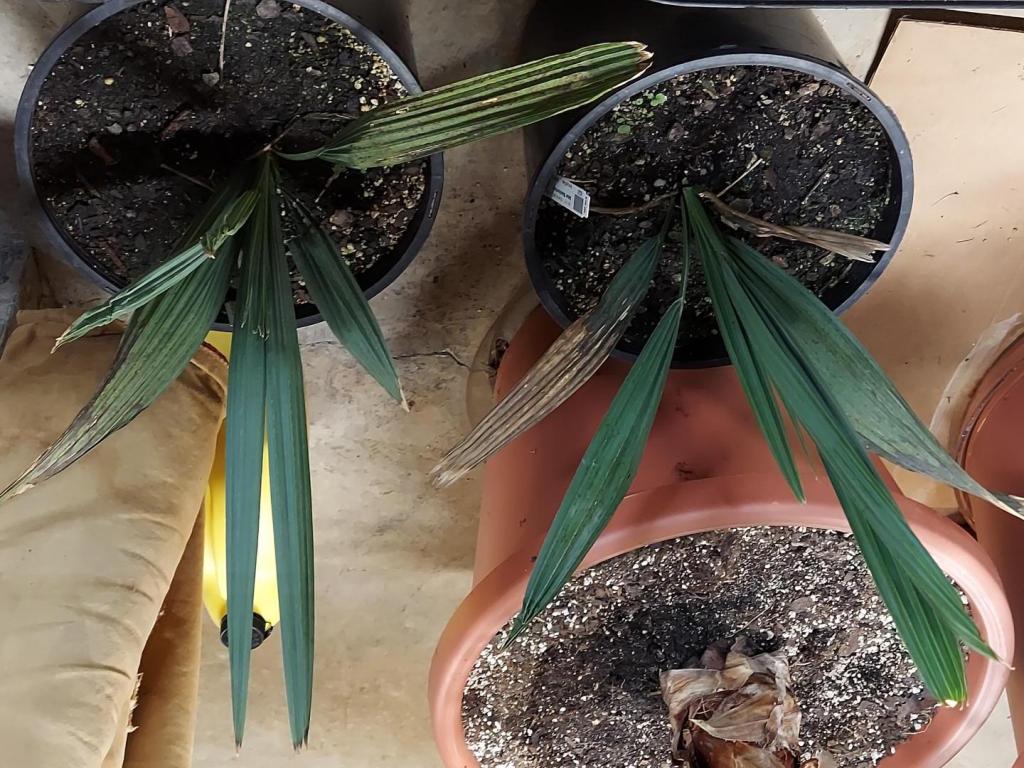
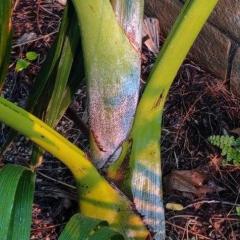
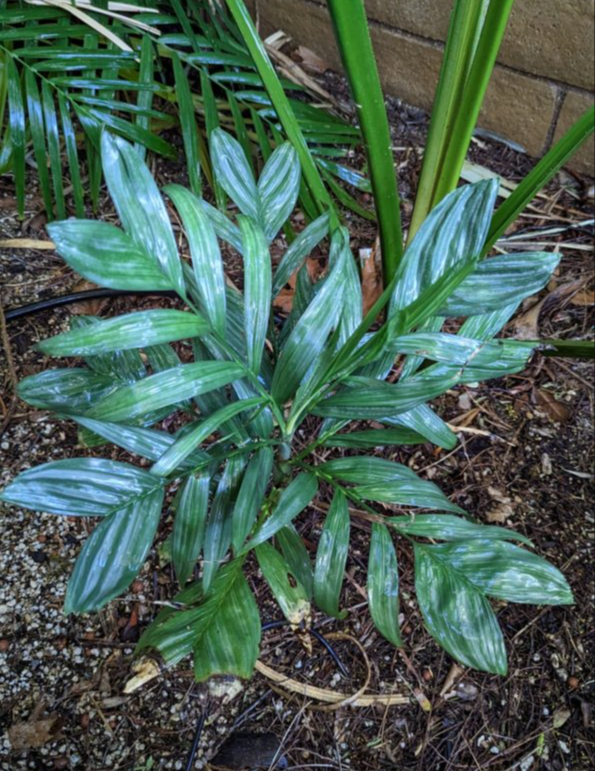
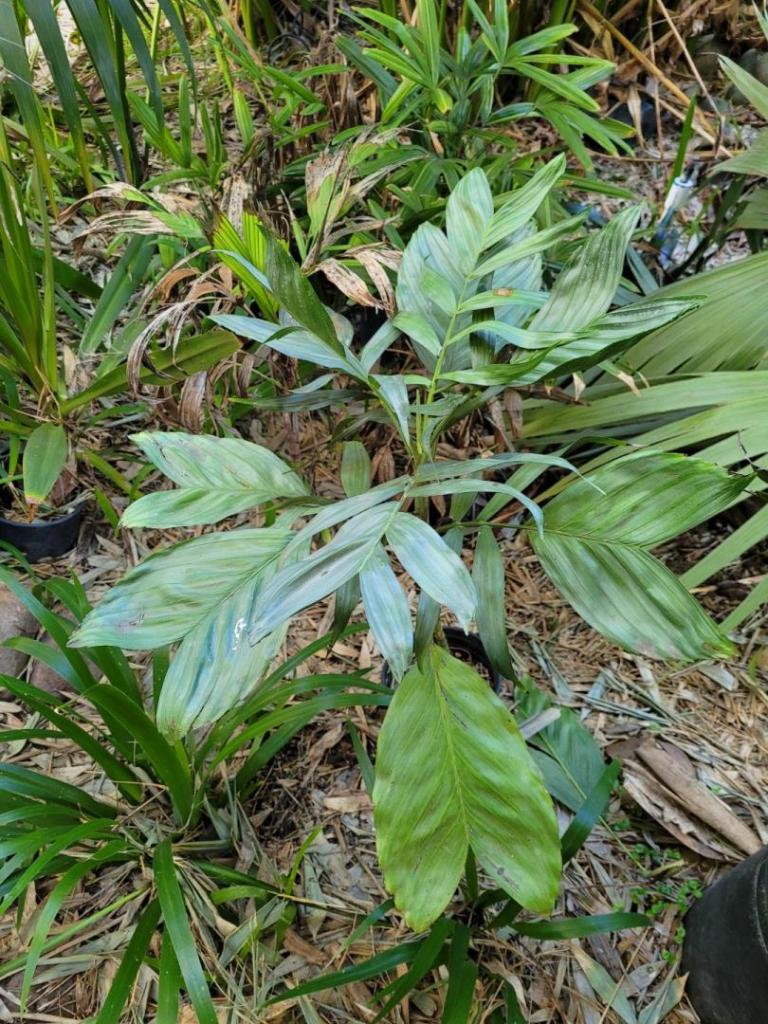


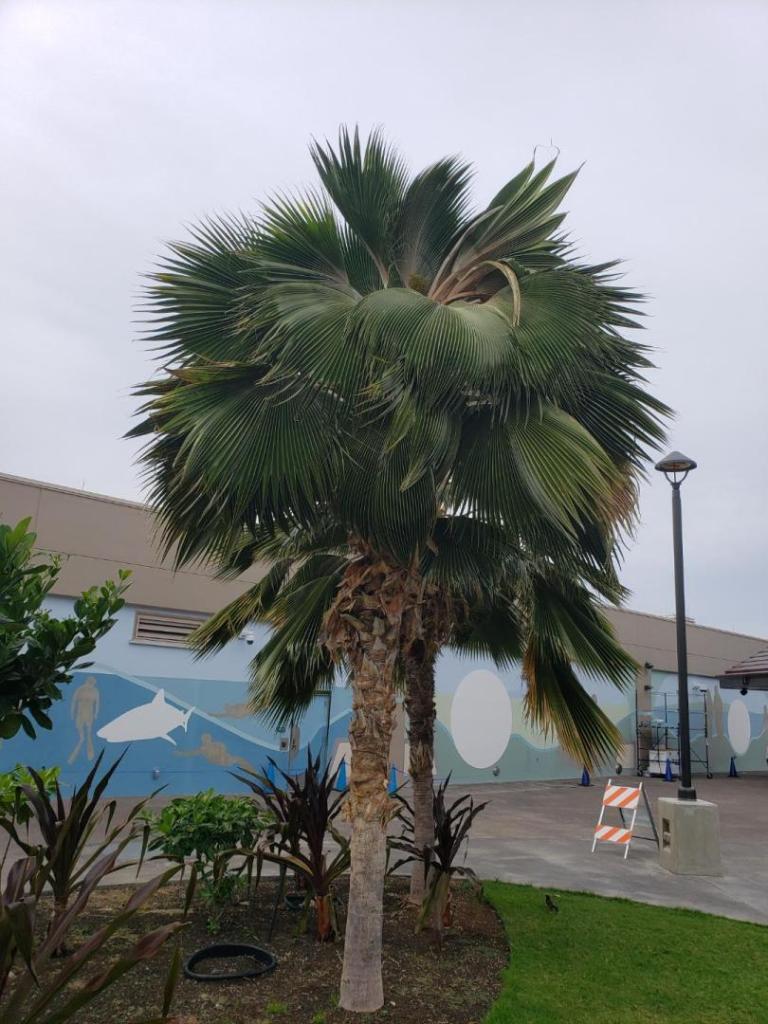
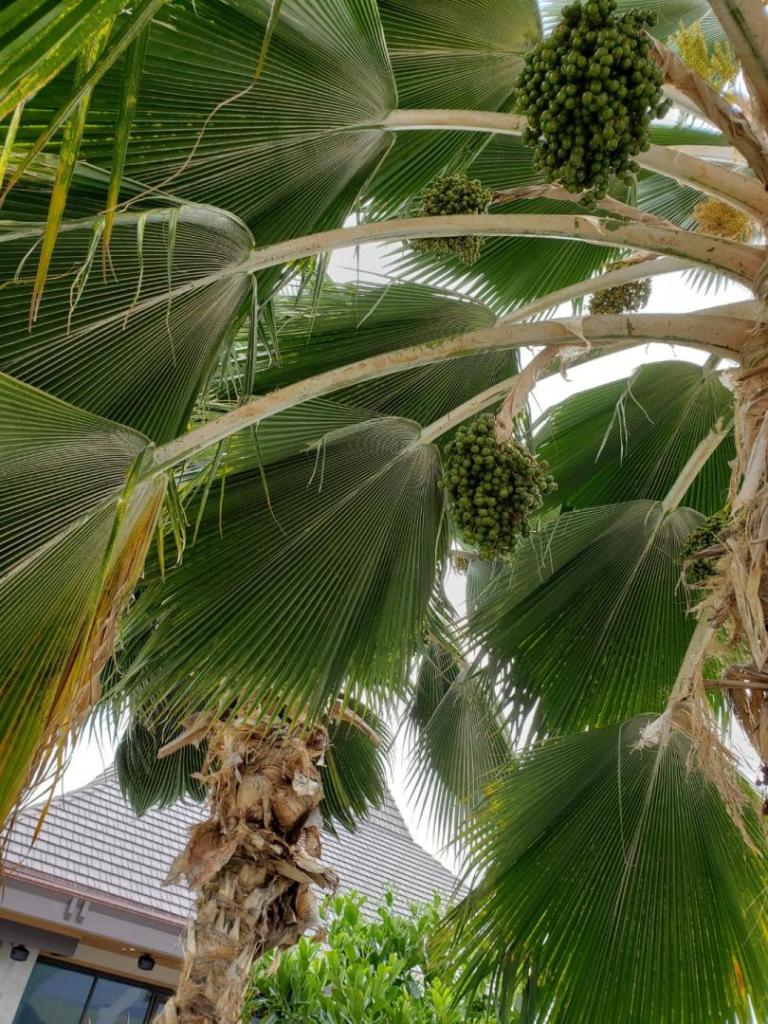

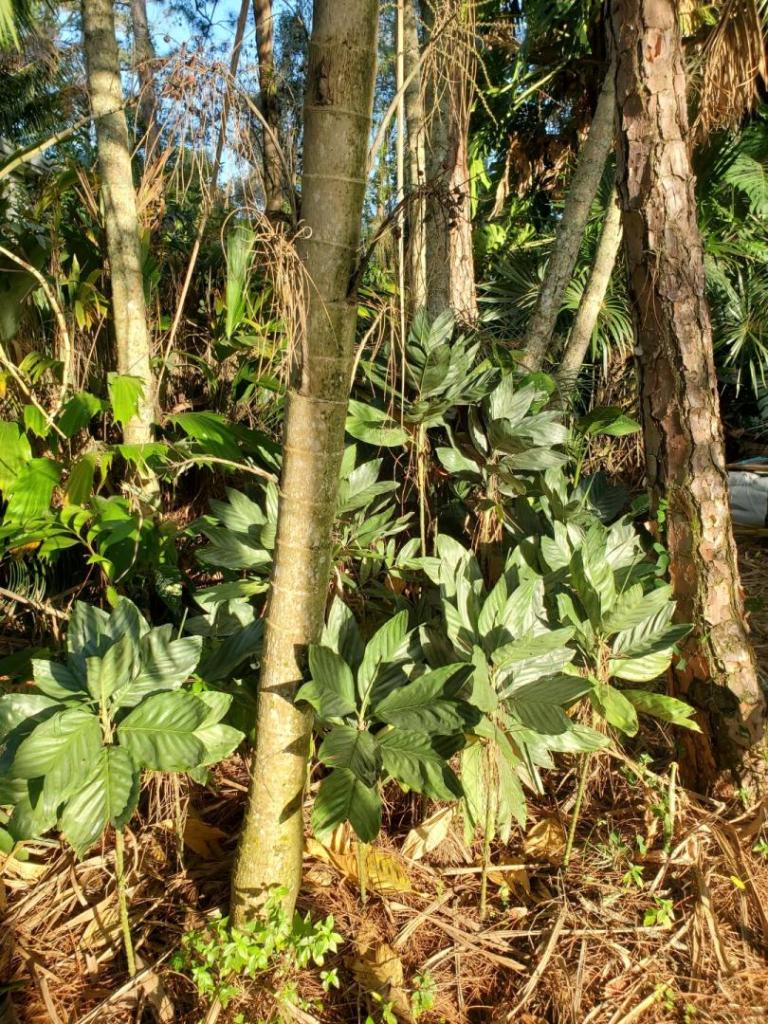


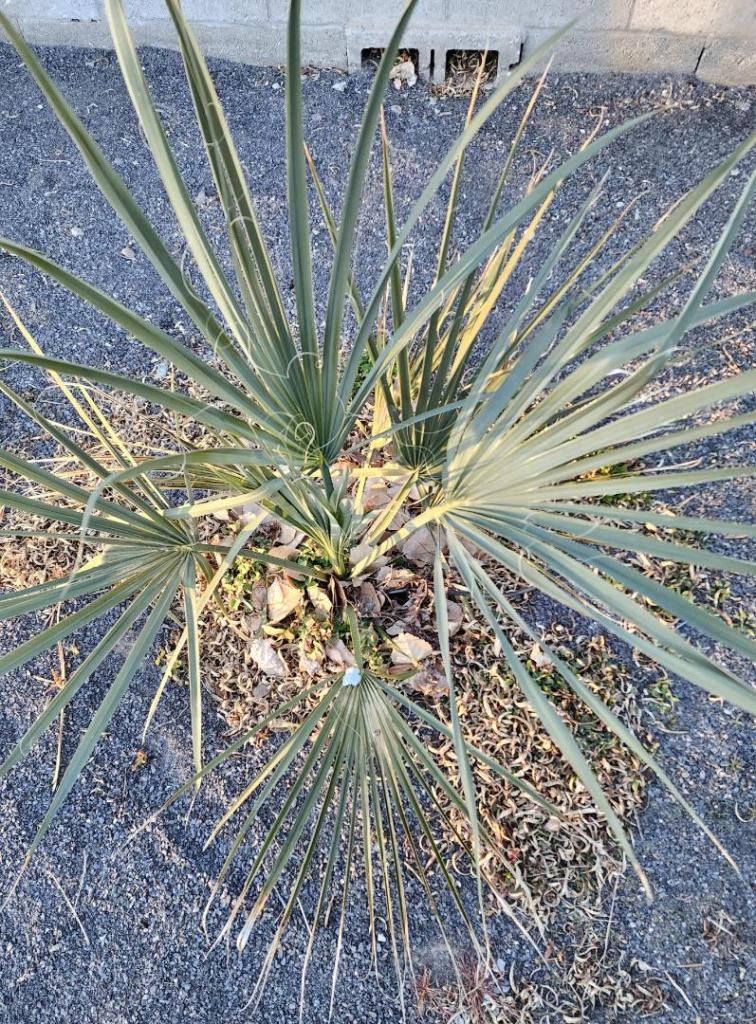
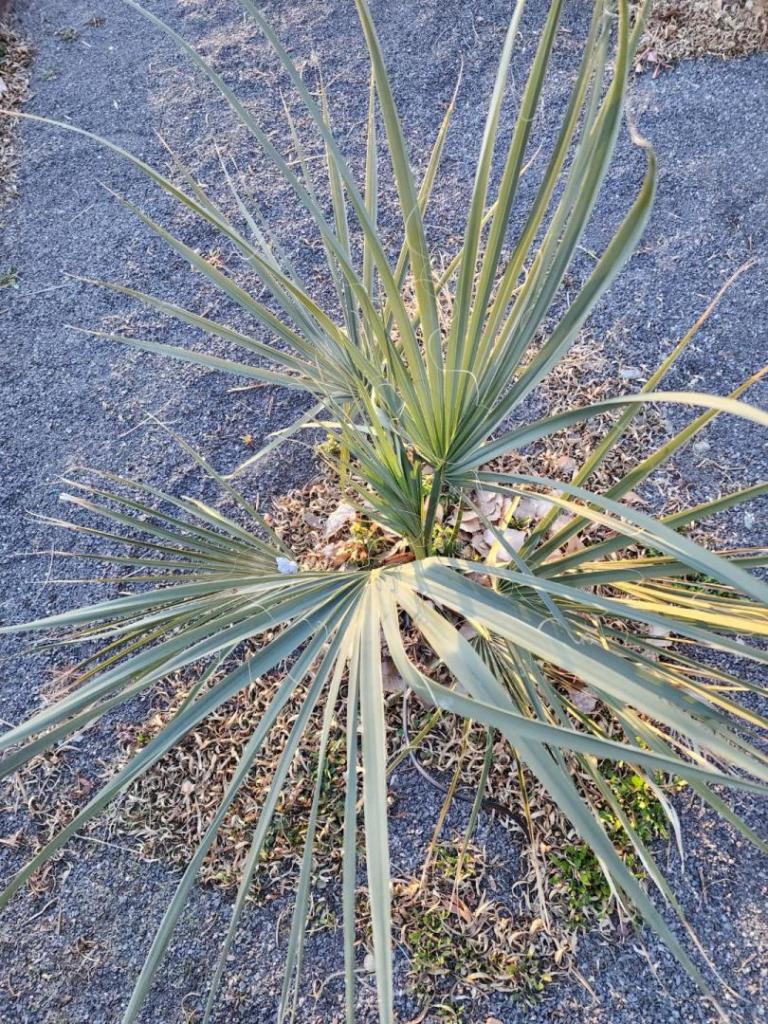
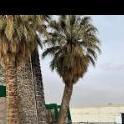



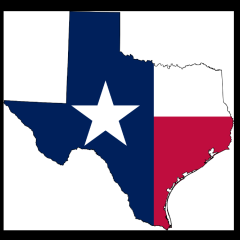
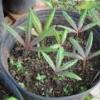
.thumb.jpg.f98e5066db1dec0358105c9c8eae8b39.jpg)
